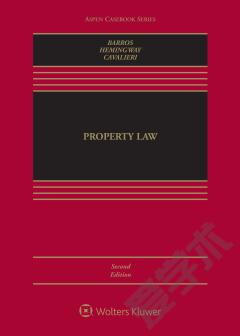Property Law
An innovative Property casebook that re-imagines the law school casebook format. Covering all the major topics included in a basic 1L Property course, Property Law looks more like an undergraduate textbook than a traditional law school casebook, making use of sidebars, illustrations, and other design devices to present material more clearly. The authors present concepts simply, then move the discussion toward complexity--the opposite of the approach taken by many current texts. Clear yet sophisticated, the casebook is the perfect choice for all skill levels. Including problems that students can and should be able to do on their own, explanatory answers, and skills-based exercises, this casebook is both professor-friendly and student-friendly. Themes that run through the course are highlighted throughout the book, resulting in a casebook that clearly presents the fundamentals of property law. This allows students to develop an understanding of basic concepts on their own while allowing professors to assist their students in developing an advanced understanding of property law. Key Features: Starts from simplicity and moves to complexity: The book first provides text that explains the basic doctrine, then presents a simple case example, and finally moves to more complex issues. Cases are introduced with explanatory text discussing the law and issues surrounding the case. This radically different approach from most other casebooks allows students to have a better grasp of the concepts and themes before they even read the case. Includes problems and exercises that students can complete on their own, with explanatory answers included in an appendix. Innovative design aids student learning, with sidebars, diagrams, charts, and illustrations that make concepts clearer to students. Cases are used as examples, not introductions to legal rules. Many topics in the book feature introductory text, illustrations, and problem sets before a single case is introduced, to aid in students' legal learning. Includes sample documents, helping students to understand core concepts. Perfect for a four-credit course, the book also features a modular design that can be used in courses of varying credit size.
{{comment.content}}








 京公网安备 11010802027623号
京公网安备 11010802027623号